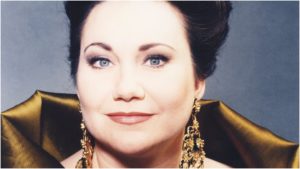
3 Composers That Defined Cheryl Studer’s Career
By David SalazarCheryl Studer, one of the most unique sopranos in recent history. Born on Oct. 24, 1955, she put together an enviable career that ranged from singing a tremendous amount of opera roles as dramatic and lyric soprano and then mezzo, to winning a plethora of major awards, to eventually becoming a teacher.
She recorded countless albums and her legacy is quite a fascinating one overall. Much of her vocal success came on the shoulders of three singular operatic giants. Here they are.
Wagner
Studer took on a whopping 11 Wagner roles throughout her career, including three (!) in “Die Walküre (Brünhilde, Sieglinde, and Helmwige). She also sang some of the major roles such as Isolde in “Tristan und Isolde,” Eisabeth in “Tannhäuser,” “Eva in “Die Meistersinger von Nürnberg,” Kundry in “Parsifal,” Elsa in “Lohengrin,” and Senta in “Die Fliegende Holländer.” She also took on the rare roles of Irene in “Rienzi” and Drolla in “Die Feen.”
Strauss
Studer was also a major proponent of the other great German composer’s work, singing a whopping nine Strauss Operas (and 11 roles) throughout her career. Among them are the big hits like “Salome,” “Der Rosenkavalier,” Elektra,” “Capriccio,” “Ariadne auf Naxos,” and “Arabella.” She sang both major soprano roles in Arabella and also took on two roles in “Elektra,” though she never appeared in the title role. She also sang “Die Ägyptische Helena” and “Daphne” at some points in her career.
Verdi
After weeding through the previous two German geniuses, it might be hard to conceive of Studer as a Verdi soprano. And yet she truly was, taking on a wide range of major roles from the Italian master. From “Aida,” to Desdemona in “Otello,” to Gilda in “Rigoletto,” to Violetta in “La Traviata” and Leonora in “Il Trovatore,” she had all the major heroines covered. But she also took risks with lesser-known or performed roles, including Hélène in “Les Vêpres siciliennes” and Odabella in “Atilla.”


